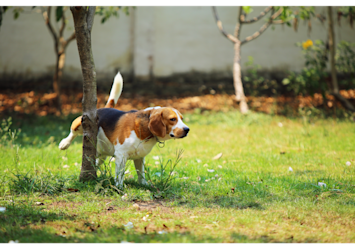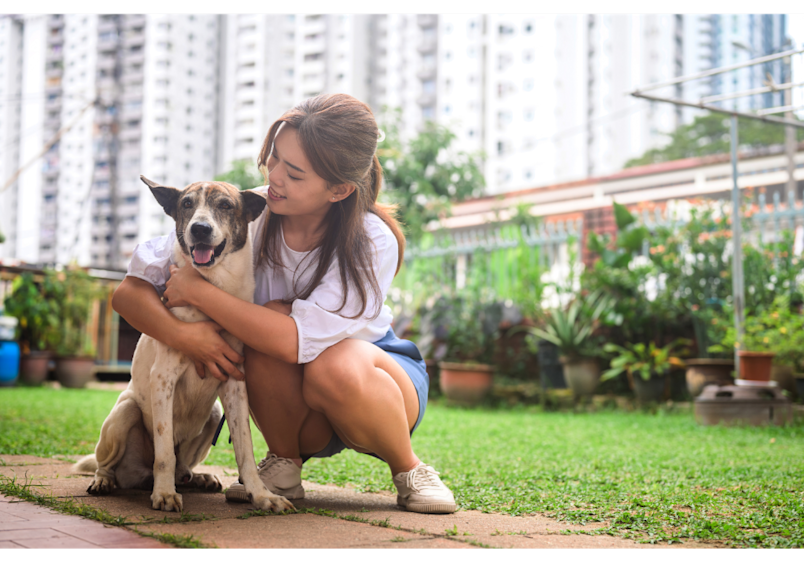
Have you ever looked at your dog and wondered how you're supposed to get them to pee in a cup? You're definitely not the only one! Getting a urine sample from your dog might sound like trying to negotiate with a toddler who's determined to do everything except what you need them to do, but it's actually way more manageable than most pet owners think.
However, learning how to get a urine sample from a dog isn't always easy! Let's explore the methods and timing to collect that urine sample without losing your sanity or your dog's trust in the process.
Why Your Vet Needs That Urine Sample
Think of your dog's urine as a health report card. Your vet can spot trouble brewing long before your dog shows any symptoms. Your vet might request a sample to check for:
Urinary Tract Infections (UTIs): White blood cells or bacteria show up when there's an infection brewing
Bladder stones or crystals: These can cause painful urination and need immediate treatment
Kidney disease monitoring: Protein levels tell your vet how well those kidneys are working
Diabetes screening: Glucose in urine indicates potential diabetes in dogs
Excessive drinking/urinating: Urine concentration helps determine underlying causes
With all these important health indicators at stake, here's why you can't just soak up that kitchen floor puddle. Contamination from floors, rugs, or cleaning products will completely mess up the results, giving your vet false information that could lead to the wrong diagnosis. Your vet needs that liquid gold straight from the source in a clean container. Fresh, clean urine tells the real story of what's happening inside your dog's body.
Best Time to Get Urine Sample from Dog
Fresh urine is like fresh coffee - the longer it sits, the more it changes, and not in a good way. That innocent yellow liquid starts hosting a bacterial party the moment it hits the air, creating fake UTI results that'll have your vet scratching their head. Plus, crystals start forming out of nowhere, and the whole sample gets wonky as water evaporates, throwing off all those important measurements.
Your best shot is first thing in the morning when your dog is practically bursting to get outside. This concentrated sample gives your vet the clearest picture of what is actually happening. If mornings don't work, try right after long naps when they wake up with that urgent energy, or stick to their regular bathroom schedule when you know they'll be ready to go.

The Pet Parent's Guide to Collecting Dog Urine Sample
Most dogs are going to give you some serious side-eye when you start following them around with a random container. A little patience goes a long way here, because your pup has no clue why you've suddenly become their personal bathroom attendant. The good news is that with the right gear and a game plan, you can pull this off without turning into that weird pet parent who makes their dog uncomfortable.
What you’ll need:
Clean, sterile container (get one from your vet or use a disposable cup)
Disposable gloves (trust me on this one)
Collection aids: aluminum pie plate or shallow container
Leash and a helper if possible
Urine catching method:
Step 1: Position Yourself
Male dogs: Wait for the leg-lifting pose, then position your container to catch mid-stream
Female dogs: Use shallow tray, slide under when they start squatting
Step 2: Stay Calm. Your dog senses stress, so take a deep breath and encourage normal bathroom behavior. Use their usual spot and the verbal cues they're used to hearing.
Step 3: Get the Good Stuff. You want the middle part of the stream - that's where the cleanest sample lives. Skip the first few drops and don't worry about catching every last drop.
Step 4: Handle with care. Pour into your sterile container, seal it tight, and don't forget to label it with your dog's name, date, and time - trust me, you don't want to play guessing games later. Now here's where time matters. You've got about 30 minutes to get that sample to your vet if it's just sitting around at room temperature. Can't make it there right away? Stick it in the fridge where it'll keep for up to 24 hours. Whatever you do, don't freeze it - that'll ruin the whole thing.
If your dog gets nervous with you hovering around, use a stick or long-handled spoon to position your container from a distance. Your dog won't feel like you're invading their personal space, and you won't have to do any awkward crouching. Also, timing is everything here. Wait for those moments when your dog is really desperate to go outside and practically bouncing by the door. When they need to pee that badly, they won't even notice you're there with a container. For small dogs, don't bother with deep cups or containers. Just use a paper plate or pie tin. It's flat, easy to slide under them, and cheap enough that you won't feel terrible if you have to throw it away afterward.
Some dogs just don't have it, and that's totally normal. If your dog is giving you "absolutely not" treatment no matter what you try, don't beat yourself up about it. Your vet deals with stubborn dogs all the time and has backup plans. They can do a quick needle directly into the bladder, use a thin tube, or just have their experienced staff give it a try since they've seen every type of difficult patient imaginable. Your vet would rather work with a calm dog than a stressed-out pet and equally frazzled owner. Don't hesitate to ask for help - that's what they're there for!
Your Dog's Health Through Urine Testing
Whether your vet collects the sample or you master the home collection technique, the real goal is making sure your dog gets the testing they need. Regular urine testing is part of comprehensive pet healthcare, and catching problems early through routine screenings can save you both money and heartache down the road. Many urinary conditions are way more manageable when they're detected before your dog starts showing obvious symptoms, which is why having a good relationship with your vet and staying on top of regular check-ups is so important. For dogs with ongoing health issues like allergies or joint problems, urine testing can also help monitor how well treatment works.
Wondering how you’re going to pay for all these tests? The good news is that both types of testing situations are typically included in different plans.
Wellness plans are a type of budgeting tool that can be added to any insurance policy if you choose to do so. These plans may pay you back for routine urinalysis as part of preventive care and regular check-ups, helping to catch potential issues early before symptoms appear.
In contrast, Embrace dog insurance may help with diagnostic testing when your dog develops symptoms of a suspected illness, along with any necessary treatments for conditions such as UTIs or chronic urinary issues.
Both types of coverage can be valuable for maintaining your pet's health, but they serve different purposes in your overall veterinary care strategy. Understanding these distinctions can help you make informed decisions about which coverage options might be most beneficial for your dog's specific needs.

Common Dog Urine Collection Questions
Now that you're ready to tackle this whole urine collection adventure, you probably have a few burning questions. Here are the most common ones that pop up when pet parents find themselves staring at their dog with a cup in hand.
How much urine do I actually need? Most labs only need about 1-2 tablespoons for a complete analysis, so you're not aiming for volume here.
What if my dog just won't go? Give them some water and wait for it to go out for 30-60 minutes. Sometimes a little patience and targeting their most desperate bathroom moments does the trick.
Can I just use those pee pads or diapers? Nope, those absorbent materials will mess with the sample and add contaminants that'll throw off the results.
The urine looks really weird. Should I still collect it? Absolutely! That weird-looking urine is exactly what your vet needs to see to figure out what is going on.
How long do I have before this sample goes bad? Get it to your vet within 30 minutes for the most accurate results, but refrigerated samples stay good for about a day.
Way to Go, Pet Parent! You've Got Dog Urine Samples Down!
What started as staring at your dog wondering how on earth you'd get pee in a cup has now become totally doable, right? With the right timing, a little patience, and maybe some creative container positioning, you can absolutely nail this whole urine collection thing. Remember the basics: catch them when they're bursting to go, aim for mid-stream, and get that sample to your vet or fridge quickly. If your dog decides to stage a bathroom boycott, don't worry. Your vet has backup plans that don't involve you chasing your pup around with a pie tin. This awkward process could catch health problems early and save you bigger headaches down the road. Plus, you'll have mastered another weird pet parent skill and probably earned yourself a pretty good story to tell!